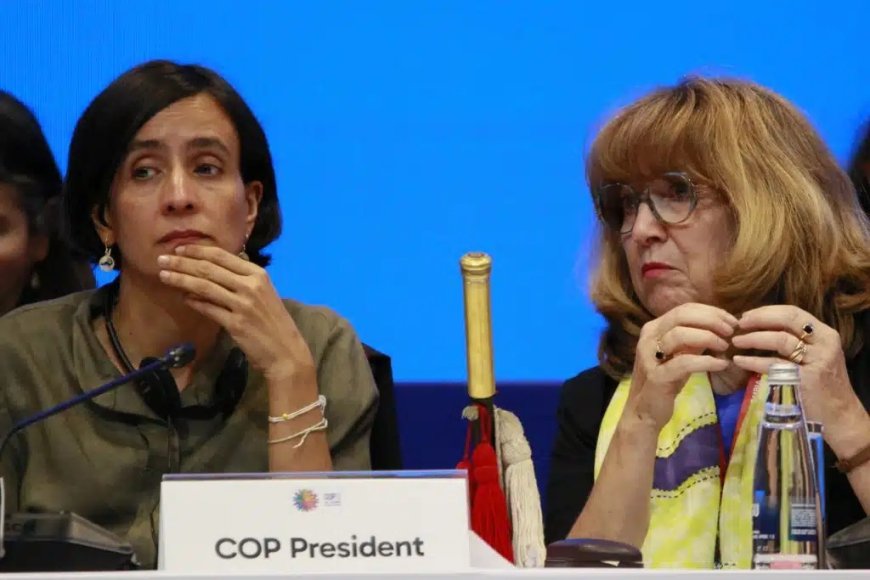Biodiversity Finance: The Key to Saving Our Planet’s Ecosystems and Humanity
Biodiversity conservation and finance are inseparable. With 1 million species at risk of extinction and ecosystems collapsing, urgent investment in nature protection is critical to our survival.

Conservation ambition for biodiversity cannot be divorced from ambition for financing biodiversity – they are two sides of the same coin. Unless we deliver biodiversity finance commitments, the Kunming-Montreal Biodiversity Framework promises will remain just pipe dreams.
Estimating 1 million animal and plant species are currently threatened with extinction, many within just decades – more than at any other point in human history. By 2100, climate change could result in the loss of more than half of Africa's bird and mammal species, and a 20-30% decline in Africa's lakes' productivity, with widespread loss of African vegetation.
Three-fourths of the planet's land has been "severely modified," and Earth's oceans have suffered even more. Oceans bear a disproportionate brunt of risks that come with human activities. They are warmer, more acidic and more polluted than ever. Our oceans also hold less oxygen than they once did, as they have become nearly carbon dioxide-saturated over time.
You might also be interested in: Only 2.8% of the World's Ocean Is 'Effectively' Protected Despite 2030 Conservation Target.
The preservation of the natural world is not solely for the protection of flora and fauna. The health and well-being of the natural world directly influence human health and life. This acceleration of environmental deterioration is already imposing costs on the resource and ecosystem services on which all life – human life as much as any other form of life – depends for survival, like clean water and air, stocks of food, and carbon sequestration.
55% of global GDP relies on healthy functioning biodiversity and ecosystem services, and 20% of countries are at risk that their ecosystems may collapse due to losses in biodiversity and related good services.
The natural world is in trouble, and unless there is a quick and drastic intervention, our world will soon be at the point of no return, where natural resources will have been used up to the point that they can no longer support life, both human and nonhuman.
What Is the Price Tag for Saving Humanity.

Experts observe that to respond to loss of biodiversity, we need to increase our investment in conservation of nature by between US$500-900 billion per annum. The most recent Organisation for Economic Co-operation and Development (OECD) estimate of global biodiversity finance stands at $78-91 billion per annum, including public, private, domestic and international finance. The same report also adds that governments collectively spend an estimated $500 billion a year on behalf of activities that can be harmful to biodiversity – five or six times larger than combined spending for the conservation of biodiversity.
The overall magnitude of finance flows harmful to biodiversity (i.e. including public and private expenditures in total) is estimated to most likely be several times larger. In short, the situation is not just desperate but worse – we not only fail to invest in nature restoration enough, we actively invest in destroying it.
In 2022, 196 nations committed to stopping and reversing biodiversity loss by 2030 under the Kunming-Montreal Global Biodiversity Framework. This ambitious nature pact contains four long-term goals to be achieved by 2050 and 23 action-oriented world goals for action between now and 2030. Of particular importance is the commitment to preserve and protect at least 30% of land, inland water and coastal and marine ecosystems globally by 2030, also known as "30 by 30."
Execution of this new deal for nature comes at a cost as well, with governments committing to reduce harmful subsidies by $500 billion annually (target 18) and increase financial resources to $200 billion annually (target 19) and international biodiversity funding from developed to developing countries to a minimum of $20 billion annually by 2025 and $30 billion annually by 2030.
But the tide of optimism which followed the signing of this fresh nature agreement for the world proved to be fleeting. Renowned as one of the most aggravating sessions in a decade, countries that gathered last year for the 16th meeting of the Convention on Biological Diversity Conference of the Parties, or simply referred to as CBD COP16, fell short of resource mobilization, as countries could not agree on the steps, actions and policies needed to increase finance for biodiversity overall.
Such deficits in ambition of nature finance concerned particularly those in the Global South who called for developed countries to "urgently provide new global financing for nature" endorsing moves towards developing a mechanism for accounting with a view to bringing the $20 billion and $30 billion timelines on track.
With talks reopened this week in Rome, Italy, it is now time that we all unite and call upon all governments to speed up. Ambition in biodiversity protection cannot be divorced from ambition in funding biodiversity – the two go together. If we don't do anything about biodiversity finance, promises established in the Kunming-Montanol Biodiversity Framework will be no more than wishes.
Are we ready to coexist with the consequences of constant and irreparable nature destruction? Unless governments make serious commitments to finance nature conservation or to implement policies and laws to protect biodiversity, solutions to the crisis for biodiversity will be impossible. The post-2020 Global Biodiversity Framework can trigger drastic changes of global finance required to achieve the 2050 Vision for Biodiversity of "living in harmony with nature." The time to act on the challenge is now.
Featured image: UN Biodiversity/Flickr.
 Kinyarwanda
Kinyarwanda
 English
English








































































